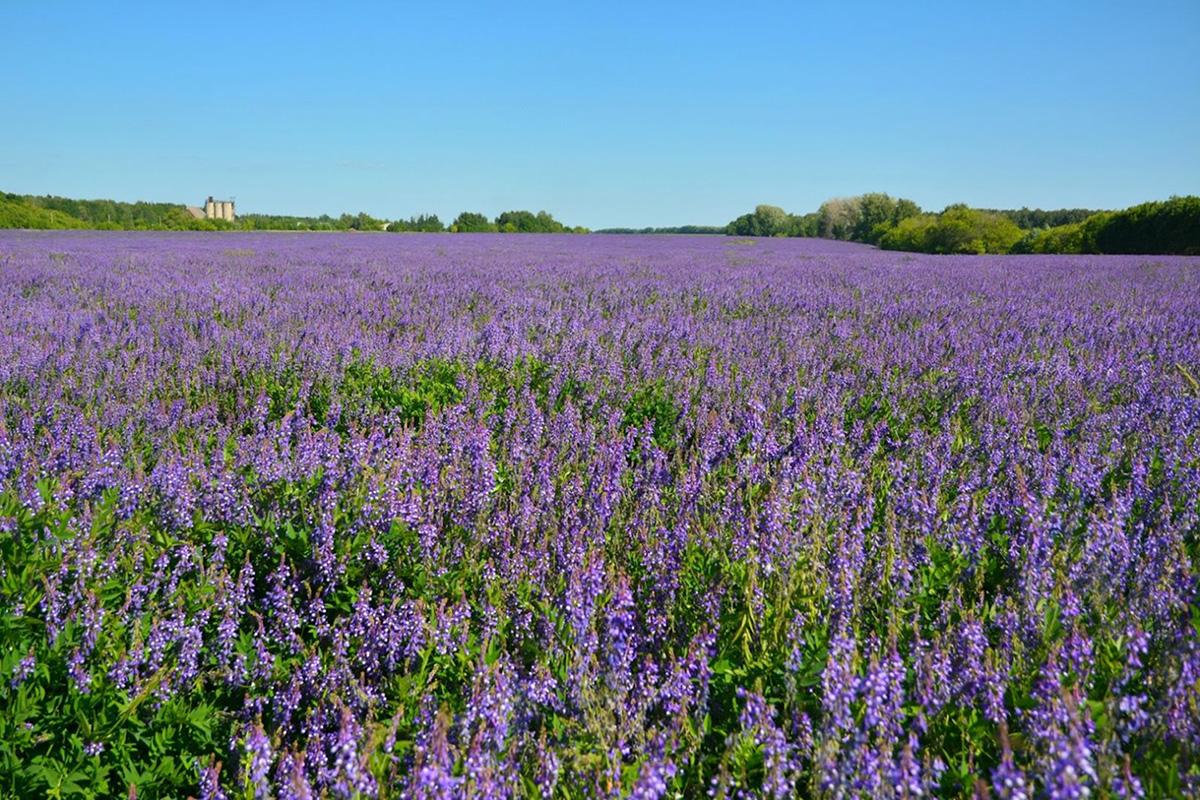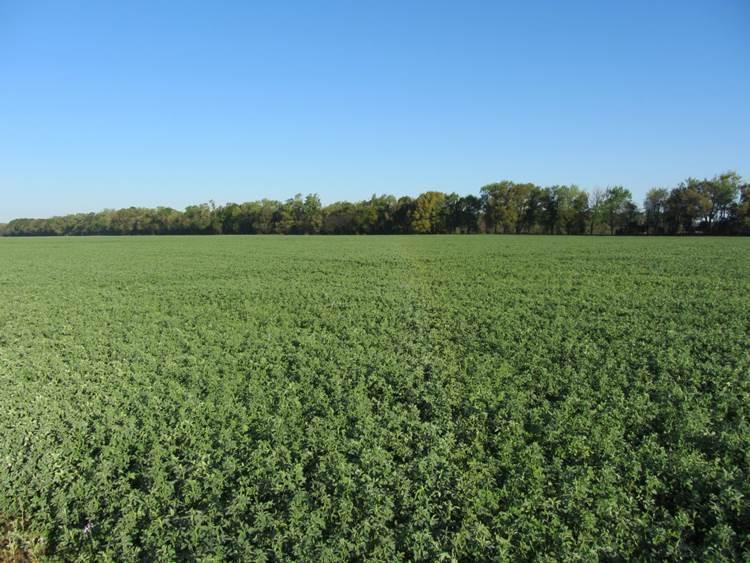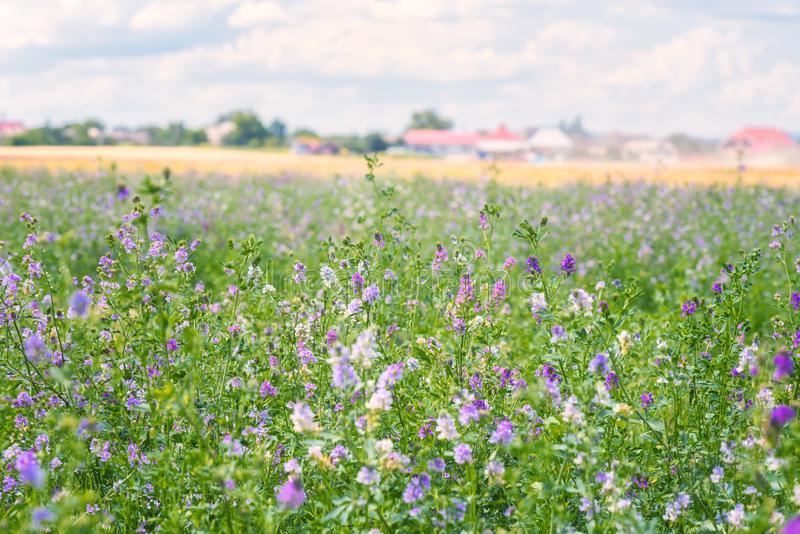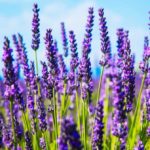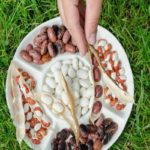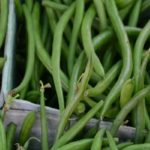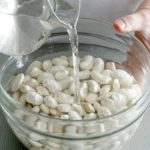Alfalfa is a legume plant that is actively used in agriculture. This crop is often used as cattle feed. But its beneficial properties do not end there. At the same time, farmers are often interested in the description and yield of alfalfa, as well as the cultivation and care of the plant. This crop is considered undemanding in terms of compliance with the rules of agricultural technology, but to obtain a good harvest, a number of rules must be taken into account.
Botanical description
Alfalfa is a leguminous plant that is considered a perennial crop. In natural conditions, wild representatives are also found.The plant is characterized by a strong and thick root system, which is distinguished by its deep location in the soil. The culture has a straight and stable stem that covers many leaves. The height of the bushes reaches 85 centimeters.
During the flowering period, blue and blue flowers appear on the plant, which form tassels. This happens in the summer. After this period ends, hooked beans form on the bushes, ripening in August.
Asia is considered the birthplace of alfalfa. In nature, the plant is found in Russia and the Balkans. It prefers to settle near water bodies, in meadows and forest edges. This legume is often used as livestock feed.
Popular varieties
Today, more than a hundred types of such crops are known. About half of them can be seen in Russia. The most popular varieties of alfalfa include the following:
- Crescent - distinguished by well-developed roots. This is a fairly large crop, reaching a height of 40-80 centimeters. It has bare shoots or covered with sparse fibers. They produce trifoliate, lanceolate-shaped leaves. Their length is 0.5-2.2 centimeters, and their width is 2-6 millimeters. In June-July, dense capitate racemes appear on the bushes. After pollination, curled beans are formed.
- Hopweed is an annual or biennial herb. It has a not very developed tap root, but grows a large number of thin stems measuring 10-50 centimeters. Small petiolate leaves reach 7-15 centimeters in length and 3-10 millimeters in width. During the flowering period, small yellow flowers appear on the plant. After which single-seeded beans up to 2 millimeters in length are formed.
- Sowing - this crop is characterized by elastic grassy shoots that reach a height of 80 centimeters. The plant is distinguished by a powerful thickened rhizome and oval leaves. During the flowering period, blue or purple flowers 5-6 millimeters long are formed on the bushes. Then they are replaced by twisted beans 6 millimeters wide.
- Variable - this perennial crop grows in the form of a subshrub. Its height reaches 70-120 centimeters. This variety is characterized by highly branched shoots that cover small leaves on long petioles. They are distinguished by their oval or ovoid shape. Tubular capitate inflorescences in the axils of the leaves are located on fairly long peduncles. The petals of this type of alfalfa often have a variegated color. They may also have a yellow, purple or blue tint. Then large beans, twisted into a spiral, appear on the bushes.
Landing instructions
You can plant alfalfa in early spring. This is done immediately after the snow melts, when the soil contains a lot of productive moisture. The exact timing depends on the climate. Planting is usually carried out from late February to early April.
Good results can be achieved with autumn sowing. In this case, it is important to do it before the onset of frost. In this case, the seeds remain in the ground under the snow all winter, undergoing stratification. With the onset of warmth, they begin to germinate and produce the first shoots. This makes the plant more resilient and resilient. In conditions of plenty of light, heat and moisture, planting work can be carried out in the summer.
Alfalfa can be planted in an area where leguminous crops previously grew.Also, the predecessors of the plant can be winter and spring cereals, sugar beets, and corn. It is recommended to prepare the site in advance. It needs to be dug up or plowed over. At the same time, per 1 square meter it is worth using 5 kilograms of organic matter and a mixture of mineral fertilizers from 50 grams of superphosphate and potassium.
Since alfalfa seeds have a fairly durable shell, they need to be treated with a scarification machine or ground with coarse sand. Once the coating is damaged, it will be easier for moisture to get inside. This will cause sprouts to appear faster.
When sowing a small amount of seeds, they can be soaked in advance. This should be done 10-12 hours before landing. After which it is recommended to place the grains in ready-made grooves, filled with water, and sprinkle with soil.
On average, it is recommended to plant 8-14 kilograms of seeds per 1 hectare - it all depends on the level of aridity of the region. In dry climate areas, use less seed. On a plot with artificial irrigation, you can plant 15-16 kilograms of beans per 1 hectare.
Proper care
In order for alfalfa to produce a good harvest, it is worth adhering to some rules of agricultural technology. At the same time, the crop needs to be watered on time, protected from weeds and pests, and fertilized.
In the first year of sowing, watering should be carried out when the sprouts reach 13 centimeters. A moderate amount of moisture will help the crop move to the second stage of development - the formation of buds. At this stage, the soil should be moistened a second time.
Irrigation of alfalfa is required only in arid areas, since precipitation in temperate climates is usually sufficient for the normal development of the crop. At the same time, prolonged rains have a bad effect on the development of the plant, which cannot withstand waterlogging.
If sufficient nutrients are added at planting, fertilizing during the growth period will be unnecessary. The only exception is poor soil, which requires additional nutrition. To form lush greenery, alfalfa should be fed with nitrogen, potassium and phosphorus.
In order for the plant to develop normally, it is necessary to control weeds. Unwanted vegetation must be mowed if it reaches a height of 16 centimeters. However, it is important to do this carefully so as not to damage the cultivated plant.
Benefits of alfalfa
Alfalfa contains a large amount of vitamins, acids and microelements. These substances are present in culture in an easily digestible form. Therefore, alfalfa can be consumed without additional processing.
This plant saturates the body with calcium, potassium, fluorine, iron, magnesium. It helps cope with anemia, restores hormonal levels in adolescents and women during menopause.
With the help of alfalfa, it is possible to cleanse the body of waste and toxins. The plant helps reduce cholesterol levels. Also, this representative of the legume family can be used for medicinal purposes. It helps with the following problems:
- nervous disorders;
- diabetes;
- eye diseases;
- haemorrhoids;
- dermatological pathologies;
- joint disorders;
- bruises and abrasions;
- pathologies of the urinary organs;
- disturbances in the functioning of the digestive system;
- colds;
- prostatitis.
Alfalfa is useful for women during lactation.It helps increase milk supply. This plant is also actively used in cosmetology. It helps tighten the skin and reduce swelling. Using the plant on your hair helps make it shinier and reduce brittleness.
Alfalfa is a fairly popular crop that contains many valuable components. In order for growing a plant to have an effect, it is important to adhere to some rules of agricultural technology.

